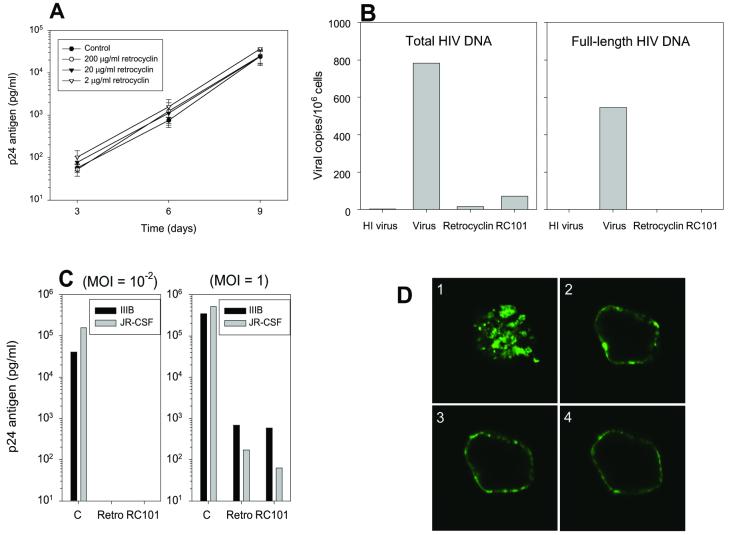Figure 5.
Mechanism of action of retrocyclin. (A) Retrocyclin (2–200 μg/ml) was incubated with HIV-IIIB (moi = 10−2) diluted in R10–50 media before infecting CD4+-selected PBMC. p24 antigen release was measured by ELISA (n = 3). Adding retrocyclin directly with HIV-1-IIIB does not reduce infection. Limit of detection = 10 pg/ml. (B) Retrocyclin (“Retro”) and RC-101 inhibited the formation of DNA from both early events (total HIV DNA) and later events (full-length HIV DNA) of reverse transcription. Data are an average of two experiments, except for RC-101 (one experiment). “HI virus” is a heat-inactivated virus control for background levels of viral DNA. (C) The p24 titers from day 9 CD4+ PBMC infected with IIIB or JR-CSF at the indicated moi, with or without 20 μg/ml retrocyclin or RC-101, are shown. RC-101 and retrocyclin were comparably active in inhibiting HIV-1 replication at low moi (Left) and higher moi (Right). (D) RC-101BODIPY-FL was detected by confocal fluorescence microscopy in patches on the surface of CD4+-selected PBMC. The focal plane of D1 is at the surface of a representative cell, whereas D2–D4 are representative sections from the middle of the same cell. Note that RC-101 aggregates in patches on the surface of PBMC, suggesting that it inhibits viral fusion or entry. Cell diameter = 15 μm.

